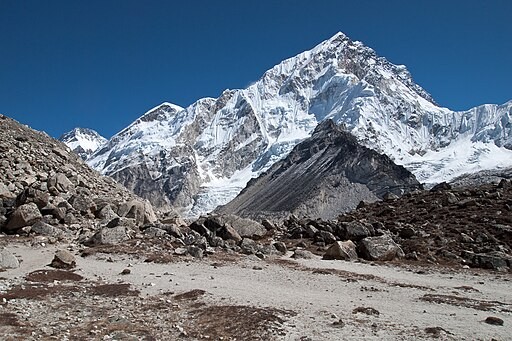Around 50 million years ago, the continent of India was carried northward by the Indo-Australian plate and collided with Eurasia. It resulted in the formation of the Himalayan mountain range. Some mountains, like the Barberton Mountain in South Africa, were formed earlier and believed to be about 3.5 billion years old.

(Photo: Wikimedia Commons/ Vyacheslav Argenberg)
Based on the processes from which the existing mountains were formed, one might wonder if new mountains are still being formed in modern times. The short answer is yes, but it requires understanding how mountains came into being in the first place.
How are Mountains Formed?
The Earth is covered by a solid layer of rocks called crust, with an average thickness of about 9-12 miles (15-20 kilometers). This layer is divided into several small and large pieces called tectonic plates.
Below the crust is a soft plastic-like layer called the mantle. The convection currents of the molten rock in the mantle lubricate the undersides of the tectonic plates and allow them to move. When the large rocky plates collide, they can create mountains and other geological features. However, these plates are different, so the landforms produced may also vary.
Tectonic plates can be classified as either continental or oceanic. The continental plate is made of granite and has a density of 2.7 g/cm3, while the oceanic plate is made of basalt and has a density of 3.0 g/cm3. This means that the continental plate is less dense (lighter) than the oceanic plate (heavier).
When these plates collide, the oceanic plate passes under the continental plate in a process known as subduction. The subducting oceanic plate melts as it reenters the mantle, forming volcanoes.
Examples of landforms created from this process are Mount Saint Helens in North America and Mount Fuji in Japan. Unlike other mountains, volcanoes constantly form from tectonic activity and can quickly appear out of nowhere. There are also cases when the pressure created by the subduction process results in the formation of non-volcanic mountains.
Meanwhile, mountains are formed from the collision of two continental plates. In such instances, the Earth's crust is displaced and forced up, like a compressed accordion. The most famous examples of this type of mountain are those that make up the Himalayas. The collision that formed them is still taking place, so it can be assumed that the Himalayas are still young and are still growing today.
However, the growth occurs at about 0.4 inches (1 centimeters) per year. This is not overly noticeable to human eyes, not only because of the slow growth speed but also because the mountains are being eroded at a similar rate.
READ ALSO: Mountain Formation: How Do These Natural Structures Form?
Will There Be New Mountains in the Future?
In 2021, a team of researchers published their prediction regarding the emergence of a new mountain called Somalaya. These new mountains are expected to be in around 200 million years. Scientists assume Somalaya will be formed from a subduction process when Somalia and Madagascar drift away from Africa and collide with India.
By the time it happens, the Earth will be unrecognizable, and many other mountains will have been formed elsewhere. This will likely occur when Europe collides with Africa in about 50 million years, and Australia merges with Indonesia.
For now, these predictions are just thought experiments, and the configuration of these land masses will happen long after we are gone. Still, the models that predict future configurations at least provide us a glimpse into a possible world we will never see.
RELATED ARTICLE: Billions of Years Ago, Earth's Mountains Might Have Stunted Their Growth
Check out more news and information on Mountains in Science Times.


![Earth's Quasi-Moon Kamo‘oalewa Could Originate From Lunar Surface Not Asteroid Belt [Study]](https://1721181113.rsc.cdn77.org/data/thumbs/full/53275/89/56/50/40/earths-quasi-moon-kamo-oalewa-could-originate-from-lunar-surface-not-asteroid-belt-study.png)











